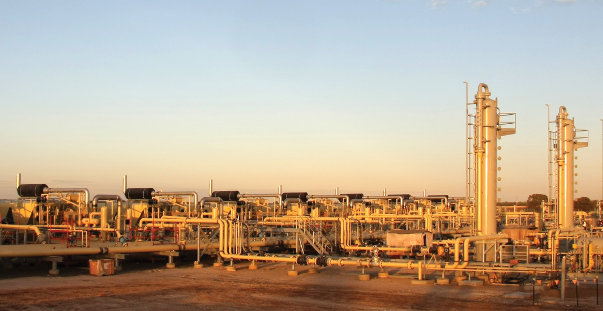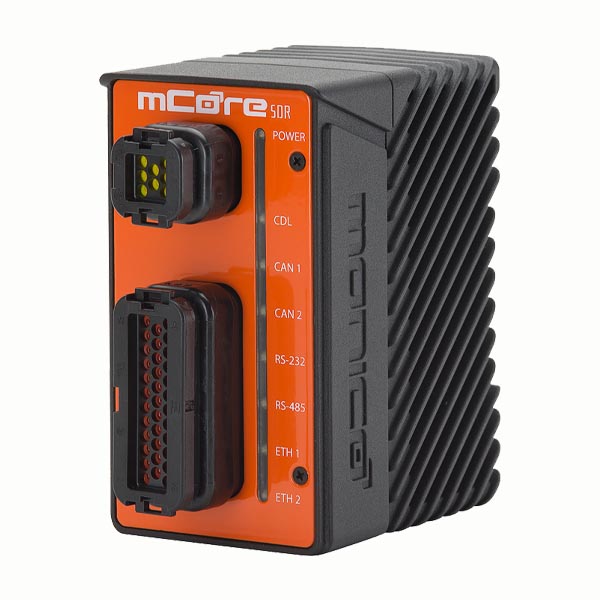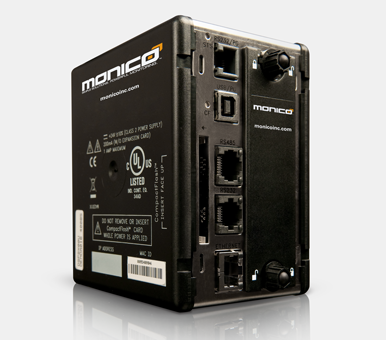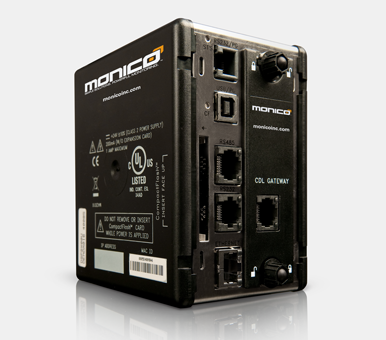Smarter Engine Monitoring & Asset Tracking for the Oil & Gas Industry
Monico Monitoring empowers oil & gas operators to maximize uptime, reduce costly failures, and maintain full visibility across remote and distributed assets. From midstream gas compression to rig power monitoring and frac truck integration, our rugged, pre-configured gateways deliver reliable data access and control across your entire operation.
Purpose-built for the harsh conditions of oilfield environments, Monico systems support a wide range of industrial protocols, engine controllers, and SCADA architectures, providing actionable insights where traditional systems fall short and bridging the gap between field equipment and enterprise decision-making.
With Monico Gateways, oil & gas teams can:
- Continuously monitor engine and compressor performance in real time
- Log high-resolution data for diagnostics, condition-based maintenance, and failure analysis
- Minimize field visits through secure remote access and virtual HMI interfaces
- Receive automated shutdown alerts and critical alarms via email or SMS
- Seamlessly integrate with Modbus, Allen-Bradley, Siemens, GE, and other control systems
- Support custom J1939 PGNs to enable OEM-specific control and protection logic
From remote compressor sites to high-demand frac operations, Monico provides edge-to-cloud monitoring systems that are field-proven, integration-ready, and scalable to match the pace of your operation.
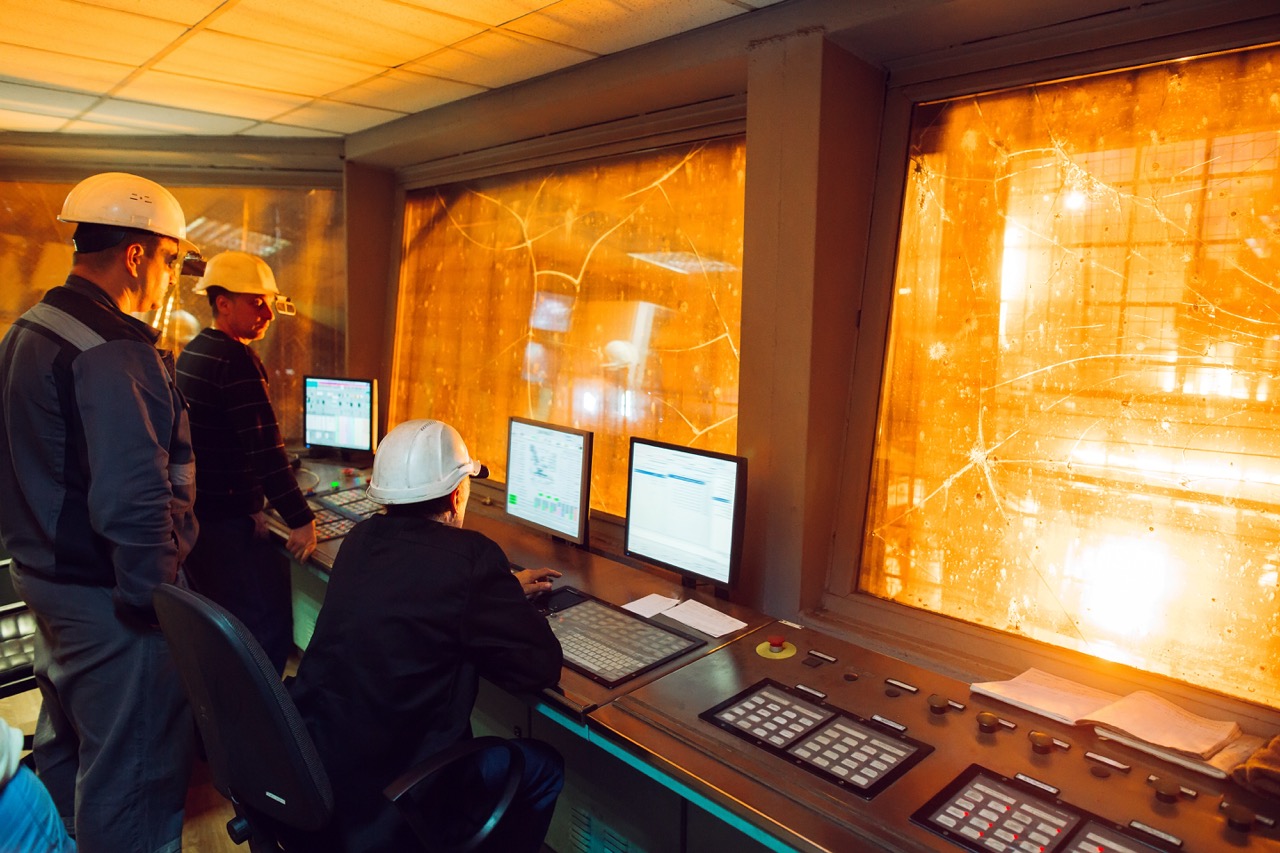
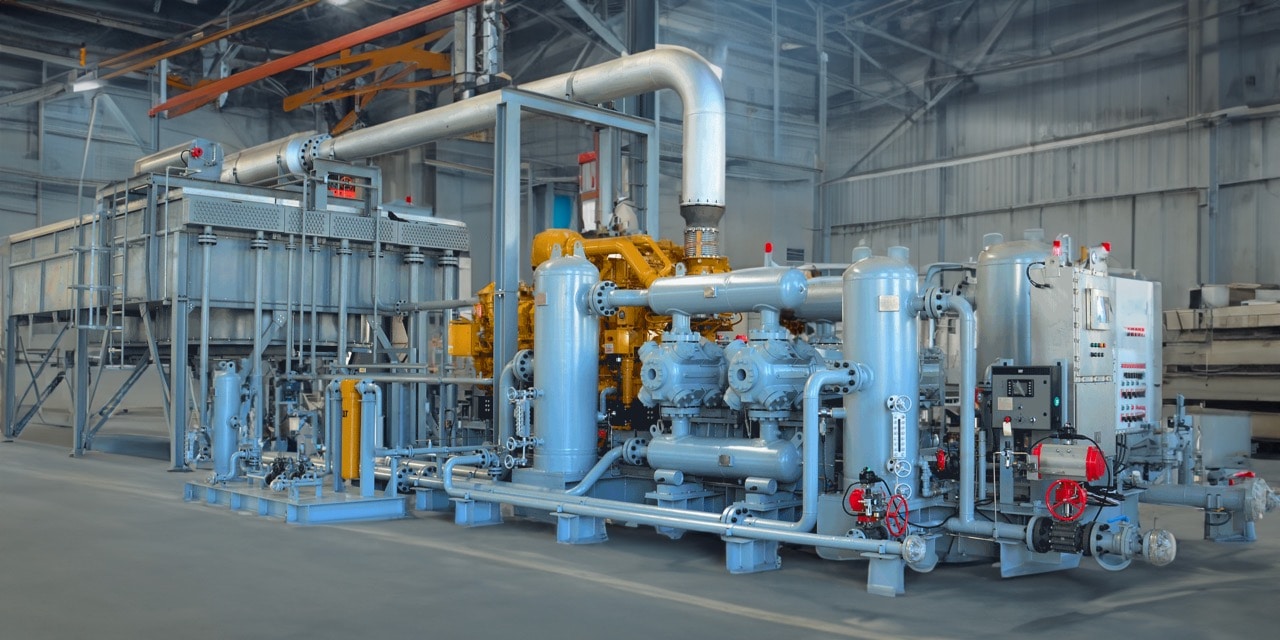
mGuard® CompressorWatch
Your Compressor’s Early Warning System
Avoid costly shutdowns and unplanned service.
mGuard® CompressorWatch delivers continuous health diagnostics for high-value industrial compressors. With application-specific monitoring algorithms, real-time alerts, and connectivity to MonicoLive™ or your existing platform, Compressor Watch catches problems early — before they impact production. It’s the smart upgrade for critical air and gas compression assets.
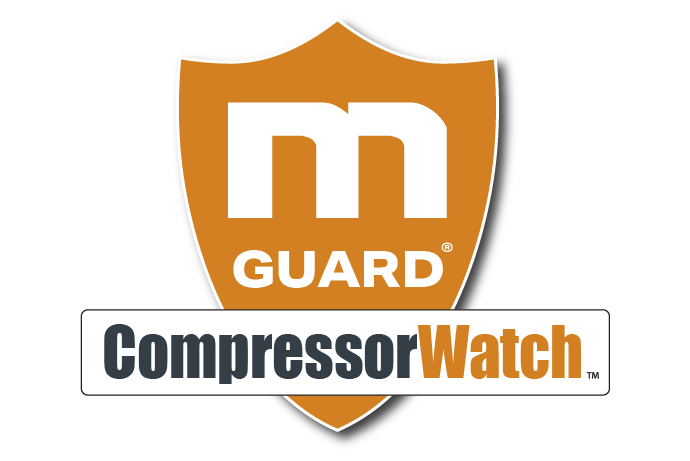
Compression and Natural Gas Monitoring Systems
One of the most common applications for Monico Gateways is with natural gas monitoring systems for the compressors used in midstream gathering and pipelines. The majority of compressors are natural gas-fueled reciprocating engines driving reciprocating compressors. Our Gateways have not only the ability to monitor the engines directly without the need for intermediary devices, but can also act as a Modbus Master to gather data from the compressor controller.
Key Capabilities:
- Bidirectional Communication: Gateway pushes engine data to the compressor controller and reads compressor data back—enabling seamless coordination between engine and compression logic.
- SCADA-Ready Interface: Provides a unified interface to seamlessly present consolidated engine and compressor data to SCADA or PLC-based control systems.
- Real-Time Logging: Capture high-resolution performance data for preventive maintenance, condition-based diagnostics, and failure analysis.
- Virtual HMI Access: Access live data—including fault codes—over a secure LAN connection, reducing reliance on on-site displays or manual checks.
- Automated Alerts & Shutdown Notifications: Configure alarms and shutdown alerts via email or SMS for faster response and reduced downtime.
- Freeze Frame Diagnostics: Leverage onboard data logging to perform snapshot analysis of abnormal operating events.
- Proactive Maintenance & Failure Prevention: Enable preventive intervention by identifying anomalies before they lead to costly downtime or component damage.
- Asset Tracking & Management Optimization: Use logged performance data to inform long-term asset planning, lifecycle management, and resource allocation.
- Remote Station Monitoring: Safely manage unmanned or hard-to-reach sites while reducing unnecessary travel and truck rolls.
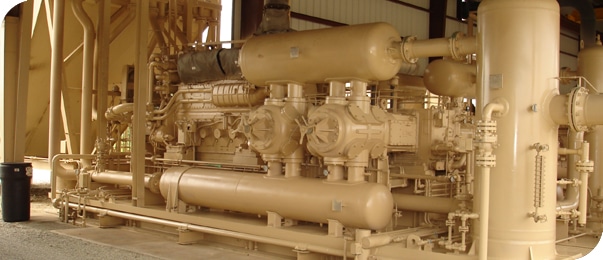
Why Monico Gateways for Natural Gas Compression?
Since launching in 2007, Monico has deployed over 5,000 Gateways in natural gas compressor applications globally. Our systems offer unmatched protocol support—communicating directly with engine controllers, compressor control systems, PLCs, and SCADA platforms—all from a single device.
Our flexible architecture enables:
- Unified Data Handling: A single Gateway pulls engine and station data, integrates with the compressor controller, and provides a single SCADA-facing interface.
- Reduced Latency: Eliminate unnecessary hops in the data path, increasing speed and reliability over legacy serial networks.
- Scalable Configurations: From basic integration to advanced logging with Gateway PLUS™, we support fleet-wide standardization.
A Basic Gateway has the ability to integrate all of these devices and provide a consolidated interface to a SCADA system, many times integrating a station-level PLC into the mix as well. In this case, we will provide engine and compressor data to the PLC and also pull station data from the PLC and provide a unified interface to the SCADA system. One benefit of this architecture is significantly increased speed due to the elimination of two devices over the largely serial networks.
A PLUS Gateway offers benefits such as real-time data logging and time management. Most serial SCADA networks cannot provide real-time data collection because of network limitations due to the number of devices. SCADA is best suited for long-term trending, but real-time data logging can provide valuable data to analyze failures. Many of our customers are able to pull log files that simultaneously log engine data, compressor data, and station data such as suction pressures in one integrated file for maximum analytic capability.
Case Study: Real-Time Logging Prevents Recurring Failures
A midstream operator experiencing frequent cylinder liner failures—costing $14,000 per incident—found no root cause through SCADA polling every 2–3 minutes. Monico installed a Gateway PLUS™ that captured 60 engine and 20 compressor parameters every three seconds, storing 200 daily log files in a rotating memory buffer.
The result? Real-time data revealed intermittent coolant spikes linked to the failures—insights traditional SCADA missed. The operator rolled out Gateway PLUS™ units across their 100+ engine fleet, significantly reducing failures and improving reliability.
Learn More:
The Role of Monitoring in Industrial Automation
Drilling Monitoring
Reliable Engine Monitoring for Critical Rig Power
Drilling rigs are one of Monico’s most established applications, with generator engines that often lack integration with rig automation systems. Most gensets provide only basic local monitoring—leaving operators blind to performance, fuel usage, and emerging faults.
Monico Gateways deliver real-time engine visibility, reduce blackout risk, and support fuel and maintenance optimization. Our proven success in this demanding environment comes from rugged hardware, deep integration expertise, and trusted support.
Key Capabilities:
- Rig Power Efficiency: Monitor genset performance and electrical load balance to prevent rig blackouts and downtime.
- Event Logging & Diagnostics: Capture engine diagnostics and system events for fast root cause analysis and long-term reliability planning.
- Fuel Economy Optimization: Track fuel consumption by engine to develop strategies that reduce cost and emissions.
- Predictive Maintenance: Log engine hours and operational events to drive preventive maintenance and reduce unplanned outages.
- Virtual HMIs: Access live data—including fault codes—over LAN for each engine, improving situational awareness.
- Automated Notifications: Configure SMS and email alerts for shutdowns, alarms, or performance thresholds.
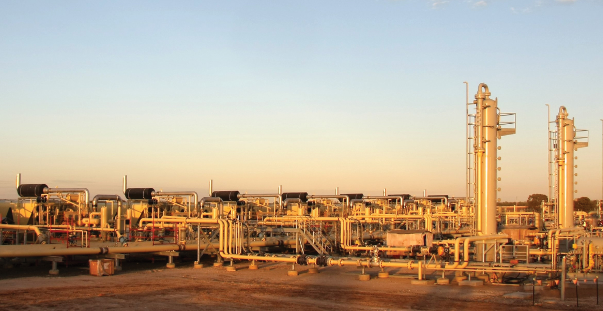
Proven Success in Rig Automation
Monico Gateways are now standard equipment on many newbuild drilling rigs and retrofitted on over 150 legacy rigs for a major contractor. With over 1,500 Gateways installed across the North American onshore drilling market, our systems integrate generator engine data into rig automation platforms or SCADA systems for real-time and historical insight.
One major contractor reported that engine integration using Monico Gateways virtually eliminated rig blackouts and significantly reduced fuel costs—proof of the power of integrated monitoring and control.
Engineered for Harsh Electrical Environments
Drilling rigs pose extreme challenges for data communications. Powerhouses house variable frequency drives (VFDs) and high-current wiring that generate significant electrical noise. Monico’s experience in this environment ensures reliable operation with best-in-class noise mitigation strategies, including:
- Isolated repeaters to prevent electrical interference on comm lines
- Proper grounding and drain wire management for engine and cable shielding
- Multi-protocol support across ports:
- (2) RS-232
- (1) RS-485
- (1) Ethernet port supporting 4 protocols simultaneously
- Dedicated genset interface with options for I/O expansion (analog & digital)
- Direct integration with Allen-Bradley, GE Fanuc, Siemens, Omron, and Woodward control systems
This robust architecture enables seamless integration of generator data into rig-wide automation systems while ensuring reliable communication—even under the most demanding conditions.
Learn More:
Remote Monitoring for Oil & Gas Completions
Frac operations place intense demands on engines and transmissions. Monico Gateways are widely used in frac truck monitoring systems to provide real-time visibility, advanced control inputs, and reliable protection for critical equipment.
Integrated Control for High-Pressure Applications
Our J1939 Gateways support control commands for torque converter lockup, engine start/stop (normal and emergency), and engine speed regulation. Monico’s ability to interface simultaneously with Modbus, Allen-Bradley, GE Fanuc, Siemens, and Omron PLCs makes us a proven solution for complex frac operations involving multiple control layers.

Proprietary PGN Support Sets Us Apart
Frac fleets often rely on OEM-specific features communicated through proprietary J1939 PGNs. Monico’s deep expertise in implementing these protocols enables advanced control strategies, including safety-critical features like Caterpillar®’s Kickout to Neutral—which automatically shifts transmissions to neutral when pressure thresholds are exceeded, protecting pumps and engines from costly damage.
In these high-pressure, high-risk environments, Monico’s systems help operators reduce failure points, extend asset life, and maintain control over mission-critical frac operations.

Why Monico
Key Advantages for Oil & Gas Operators

Full control of your data
Your operational data stays in your hands—securely collected, stored, and transmitted without vendor lock-in or third-party access restrictions. You own the insights, the history, and the decision-making power, because in this industry, actionable intelligence and operational independence are critical.

Preconfigured for the field – no custom coding
Monico solutions are engineered for deployment in harsh, high-stakes environments—without requiring in-house developers or custom integration work. Each Gateway ships preconfigured for your specific engines, compressors, or frac equipment, enabling rapid deployment and faster ROI.

Built for real-world operators
Designed with field teams and operations managers in mind, our interface makes it easy to visualize engine performance, monitor alarms, and pull diagnostics—whether you’re at a central control center or remote compressor station. No steep learning curve, just intuitive, actionable data.

OEM-agnostic with broad protocol compatibility
Oil and gas fleets run on mixed equipment—from CAT® to Waukesha®, Siemens to Allen-Bradley. Monico Gateways are built to work across them all, with out-of-the-box support for Modbus, J1939 (including proprietary PGNs), Allen-Bradley, GE Fanuc, Siemens, Omron, and more. We simplify integration, even across legacy systems.
FAQs
Frequently Asked Questions
What types of oil & gas operations benefit from Monico Monitoring?
Monico’s solutions are used across midstream, drilling, and frac operations—monitoring natural gas compressors, engine-driven generators, and frac truck systems. Our products are ideal for applications where real-time data and remote monitoring can prevent downtime and reduce maintenance costs.
What industrial protocols do Monico systems support in oil & gas environments?
Monico Gateways support a wide array of protocols including Modbus TCP/RTU, J1939, BACnet, SNMP, and many proprietary PGNs. This flexibility ensures that data from engines, compressors, and ancillary devices can be accurately collected and transmitted across even the most challenging networks.
Can Monico systems support remote monitoring of unmanned oil & gas stations?
Yes. Our Gateways are designed to work in remote or unmanned installations, offering virtual HMI access via LAN or Internet. This remote capability enables continuous oversight of compressor performance and engine activity without the need for frequent on-site visits.
How do Monico Gateways integrate with existing SCADA systems?
Our Gateways are pre-configured to serve as a unified interface between engine data, compressor controllers, and your SCADA or building automation system. They support a variety of protocols—such as Modbus, Allen-Bradley, Siemens, and GE—allowing seamless integration with existing systems without costly modifications.
How can Monico Monitoring reduce downtime and equipment failure?
By providing real-time data logging, freeze frame diagnostics, and proactive alarm notifications (via email or SMS), our systems enable operators to identify anomalies early. This allows for preventive maintenance and rapid troubleshooting, significantly reducing the likelihood of catastrophic failures and unscheduled outages.
What are the benefits of integrating both engine and compressor data into one system?
Integrating data from both engines and compressor controllers creates a holistic view of your operations. This unified interface not only simplifies troubleshooting and maintenance but also helps optimize performance, improve fuel economy, and enhance overall asset management.
